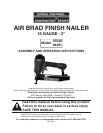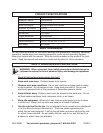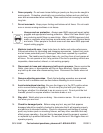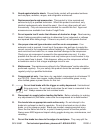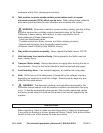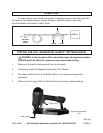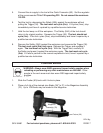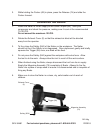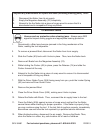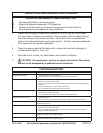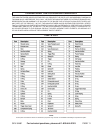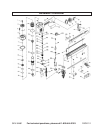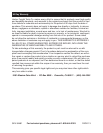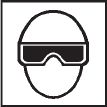
SKU 94481 For technical questions, please call 1-800-444-3353 PAGE 3
6. Dress properly. Do not wear loose clothing or jewelry as they can be caught in
moving parts. Protective, electrically non-conductive clothes and non-skid foot-
wear are recommended when working. Wear restrictive hair covering to contain
long hair.
7. Do not overreach. Keep proper footing and balance at all times. Do not reach
over or across running machines or air hoses.
8. Use eye and ear protection. Always wear ANSI approved impact safety
goggles and appropriate hearing protection. Wear a full face shield if you
are producing metal lings or wood chips. Wear a NIOSH approved dust
mask or respirator when working around metal, wood, and chemical dusts
and mists. Other people in the work area must also wear ANSI approved
impact safety goggles.
9. Maintain tools with care. Keep tools clean for better and safer performance.
Follow instructions for lubricating and changing accessories. Inspect tool cords
and air hoses periodically and, if damaged, have them repaired by a qualied
technician. The handle must be kept clean, dry, and free from oil and grease at
all times. Do not operate a tool if any portion of the tool’s operating controls are
inoperable, disconnected, altered, or not working properly.
10. Disconnect air hose and release any built-up air pressure. Never service the
Nailer, clear jams, or disassemble with the air hose attached. Always release
any built-up air even after disconnecting hose. Disconnect the Nailer when not
in use.
11. Remove adjusting wrenches. Check that adjusting wrenches are removed
from the tool or machine work surface before attaching to an air source.
12. Avoid unintentional starting. Be sure the trigger is in the OFF position when
not in use and before plugging in. Do not carry any tool with your nger on
the trigger, whether it is attached to an air source or not. Do not point the tool
towards yourself or anyone whether it contains brads or not.
13. Stay alert. Watch what you are doing. Use common sense. Do not operate any
tool when you are tired.
14. Check for damaged parts. Before using any tool, any part that appears
damaged should be carefully checked to determine that it will operate properly
and perform its intended function. Check for alignment and binding of moving
parts, any broken parts or mounting xtures, and any other condition that may
affect proper operation. Any part that is damaged should be properly repaired
or replaced by a qualied technician. Do not use the tool if the trigger does not
operate properly.



